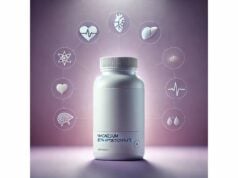
Maca (Lepidium meyenii), a hardy cruciferous root grown above 3,800 meters in the Peruvian Andes, has shifted from staple food to global supplement. Traditional use centers on stamina, fertility, and resilience at high altitude. Modern interest focuses on mood, sexual well-being, energy, and exercise support. Unlike many botanicals marketed for “hormone balance,” maca doesn’t supply hormones; instead, its unique fatty acid amides (macamides) and other phytochemicals appear to act on neuromodulation and metabolic pathways. Human studies suggest small benefits for sexual function and semen quality in select settings, with generally good tolerability over weeks to a few months. At the same time, quality differences between colors (yellow, red, black), variability in processing (raw vs. gelatinized), and product purity make smart selection and dosing essential. This guide translates the evidence into practical steps: how maca may work, realistic benefits, how much to take, how to choose a product, who should avoid it, and where the science stands today—so you can decide if maca fits your goals and how to use it responsibly.
Fast Facts
- May modestly support sexual desire and semen parameters in some adults; benefits are usually small and gradual.
- Safety caveat: mild GI upset and insomnia can occur; thyroid caution if iodine intake is low due to glucosinolates.
- Typical trial-based dose: 1.5–3 g/day of powder or equivalent standardized extract for 8–12 weeks.
- Avoid during pregnancy or breastfeeding, with uncontrolled thyroid disease, or if you have hormone-sensitive conditions without clinician guidance.
Table of Contents
- What is maca and how it works
- Proven benefits and what to expect
- How to take maca: dosage and forms
- Choosing maca types and quality
- Who should avoid maca and side effects
- What does the evidence say today
What is maca and how it works
Maca is the dried hypocotyl (root) of Lepidium meyenii, a brassica relative of cabbage and mustard that thrives in extreme Andean conditions. It is consumed as a food in Peru—boiled, baked, or milled into flour—and, more recently, encapsulated or powdered as a supplement worldwide. Three commonly marketed color phenotypes are yellow (most abundant), red, and black; each has overlapping but distinct nutrient and phytochemical patterns.
Key bioactives. Maca contains carbohydrates, plant proteins, minerals (iron, potassium, calcium), fiber, and secondary compounds including glucosinolates (typical of the brassica family), sterols, polyphenols, and a distinctive group of fatty acid amides called macamides (and related macaenes). Macamides may influence the endocannabinoid system indirectly by resembling anandamide-like lipids, which could help explain perceived effects on mood, motivation, and sexual desire. Unlike phytoestrogen-rich plants, maca does not supply estrogen or testosterone and usually does not change sex hormone levels in short-term trials.
Mechanisms in plain language.
- Neuro-metabolic support: Macamides and polyphenols may modulate neurotransmission linked to motivation and stress response, and support mitochondrial function, which together could nudge energy and drive.
- Reproductive parameters: In animals, black maca often shows the strongest support for sperm count and motility; human trials are fewer and smaller, but some report improvements in semen concentration or self-reported desire.
- No direct “hormone replacement.” Most trials find no meaningful changes in circulating testosterone, estradiol, LH, or FSH after weeks of use, suggesting symptom effects (when present) occur without measurable endocrine shifts.
Processing matters. Raw maca is starch-rich. Gelatinized maca is heat-treated to remove much of the starch, concentrating other constituents and improving digestibility—useful for people who experience gas or bloating with raw powder. Extracts can further standardize constituents (for example, by macamide content) and reduce batch-to-batch variability.
What maca is not. It’s not a cure-all, not a replacement for medical therapy, and not a proven performance enhancer in trained athletes. It is better viewed as a functional food or adjunct that may provide small additive benefits over weeks when paired with sound lifestyle and medical care.
Proven benefits and what to expect
Sexual well-being (libido). Several small, placebo-controlled trials in adults report modest increases in self-rated sexual desire with maca after 6–12 weeks. Effects are usually gradual and modest—think incremental improvements rather than dramatic changes. In women with antidepressant-associated sexual dysfunction, higher intakes (around 3 g/day) have shown stronger signals than lower doses.
Semen parameters. Meta-analyses pooling randomized trials suggest maca can improve sperm concentration in some contexts, with mixed results for motility and morphology. Benefits, when seen, tend to appear after 8–12 weeks. Heterogeneity is high: trial populations range from healthy men to those with subfertility, and product types vary (powders vs. extracts; unspecified vs. black/red varieties). That means individual responses differ, and expectations should be cautious.
Mood and energy. Some studies in healthy or high-altitude adults using 3 g/day of black or red maca report improvements in fatigue, mood, and perceived energy versus placebo. These outcomes are often measured with quality-of-life scales rather than objective performance tests, and the clinical magnitude is small. People commonly describe steadier daytime energy and slightly better exercise tolerance, but sleep and training loads still matter more than any supplement.
Menopause-related symptoms. Early randomized trials and crossover studies explored hot flashes, night sweats, and mood. Results are mixed: a few show reductions in symptom scores; others do not. Where benefits occur, they are typically similar in size to placebo responses or restricted to subscales (for example, mood more than vasomotor symptoms). Maca does not appear to raise estrogen levels or uterine thickness in short studies.
Exercise and altitude. Preliminary work suggests maca may support perceived energy and altitude tolerance after several weeks, with small changes in selected biomarkers. However, controlled comparisons to training-matched programs often show no meaningful advantage in objective performance metrics like time trials or maximal strength.
What not to expect.
- Immediate effects: most outcomes (libido, semen parameters, mood) emerge after 6–12 weeks.
- Large changes in hormones or body composition: maca’s benefits, when present, are symptom-level and typically small.
- Reliable solutions for complex conditions (e.g., infertility, major depression, cardiometabolic disease): these require comprehensive medical evaluation and evidence-based therapies.
How to interpret “benefits.” In nutrition and botanical science, modest improvements can still be valuable if they complement foundational care (sleep, nutrition, training, mental health support). If a trial shows small average gains, individual results may vary widely. Build a stop-rule: if you don’t notice any meaningful change by week 8–12, reassess whether to continue.
How to take maca: dosage and forms
Trial-based dose ranges. Most human trials have used 1.5–3 g/day of maca powder (often gelatinized) or an equivalent daily amount of standardized extract, taken for 8–12 weeks. When benefits are dose-responsive (for example, in antidepressant-associated sexual dysfunction), 3 g/day has outperformed 1.5 g/day. For fertility-related goals, studies typically span 12–16 weeks to align with spermatogenesis cycles.
Starting plan (general adult use).
- Week 1–2: 1.5 g/day (roughly ½–1 teaspoon of powder, depending on density), taken with food to reduce GI upset.
- Week 3–8: Increase to 2–3 g/day if well tolerated and if your goal is sexual well-being, mood, or semen parameters. Split into 1–2 doses to reduce GI symptoms.
- Week 8–12: Reassess. If you haven’t noticed a meaningful change, consider stopping. If continuing, plan periodic breaks (for example, 2–4 weeks off after 8–12 weeks on) while you evaluate whether it remains helpful.
Powder vs. capsules vs. extracts.
- Powder: Versatile for smoothies or oatmeal; provides the widest nutrient profile. Look for “gelatinized” if you’re sensitive to starch. Taste is malty/caramel-like with a radish note.
- Capsules/tablets: Convenient, but check per-capsule dose. Many products supply 450–750 mg per capsule; reaching 1.5–3 g/day may require 2–6 capsules.
- Standardized extracts: Typically list a ratio (e.g., 4:1) or a macamide content. Standardization can improve consistency and dose-to-dose predictability.
With or without food? Taking maca with food often reduces bloating or nausea. Morning or early afternoon dosing may minimize insomnia in sensitive users.
What “3 g/day” looks like in real life.
- Powder: approximately 1 leveled teaspoon (often near 2.5–3 g depending on grind), once or divided.
- Capsules: 2 capsules 3×/day if each capsule contains 500 mg (check your label).
- Extracts: follow the manufacturer’s extract-equivalency; a 500 mg concentrated extract may correspond to a higher weight of raw root.
Stacking with other supplements. Maca is frequently paired with zinc, vitamin D, omega-3s, or ashwagandha for men’s health stacks. Keep stacks simple; add one change at a time for several weeks so you can judge effect and tolerability. Avoid combinations that add stimulants late in the day if you’re prone to insomnia.
When to cycle. Cycling (for example, 8–12 weeks on, 2–4 weeks off) helps you evaluate whether benefits persist and may reduce habituation to subjective effects like energy or drive.
Choosing maca types and quality
Color phenotypes and use cases.
- Yellow maca: Most common and widely studied in general-purpose formulas. A practical default for first-time users focused on mood or energy.
- Red maca: Preclinical work highlights prostate-support signals; human data remain preliminary. Some users prefer red maca for mood steadiness.
- Black maca: Shows the strongest preclinical signals for sperm parameters and memory. In human studies, black maca is commonly used when the goal is semen quality or sexual desire, though results are not uniform.
Because most consumer products are blends or do not disclose color ratios, choosing a single-color standardized product can help you test a specific hypothesis (for example, black maca for semen metrics). If labels are vague, contact the brand for color composition and standardization markers (such as macamide content).
Raw vs. gelatinized. If you experience gas, cramping, or bloating with raw powder, switch to gelatinized maca (heat-treated to remove much of the starch). Gelatinization doesn’t add gelatin; it’s a processing method that makes maca easier to digest and can concentrate certain actives.
Quality checklist.
- Identity & species: Confirm Lepidium meyenii (or L. peruvianum, a debated synonym/labeling term) on the Supplement Facts.
- Third-party testing: Prefer brands that publish heavy metal, microbial, pesticide, and adulteration testing. Independent certifications (USP, NSF, Informed Choice) indicate stronger quality controls.
- Standardization: Look for a defined extraction ratio or macamide content to improve batch consistency.
- Country of origin & altitude: Authentic Andean sourcing can matter for phytochemical profile. If grown elsewhere, ensure agricultural practices minimize pesticide residues and document soil testing.
- Freshness: Maca’s lipids can oxidize over time. Choose products with latest lot dates and opaque, airtight packaging. Store powder cool and dry.
Red flags to avoid.
- Proprietary blends that hide dose per serving.
- Hyperbolic claims (“hormone replacement,” “instant testosterone booster,” “miracle fertility cure”).
- Unclear species identification or the absence of lot-specific testing data.
- Unusually low prices for “organic, high-altitude, single-color” claims—counterfeits and dilutions have been reported in the marketplace.
Practical buying tip. Start with a 30–60 day supply from a brand that provides COAs (Certificates of Analysis) on request. If a product seems effective and well tolerated, you can commit to a larger quantity from the same lot or manufacturer.
Who should avoid maca and side effects
Common, usually mild side effects. Some users report bloating, gas, nausea, headache, or trouble sleeping, especially with late-day dosing or higher intakes. Switching to gelatinized forms, splitting the dose, and taking maca with meals typically reduce GI complaints. If insomnia appears, move the entire dose to morning.
Less common concerns. Sensitive individuals may notice restlessness or jitteriness. Rare case reports describe adverse reactions, sometimes linked to multi-ingredient products or alcohol-based “maca liquors,” which differ from standardized supplements.
Thyroid and iodine considerations. Like other brassicas, maca contains glucosinolates. In people with low iodine intake or untreated thyroid disease, very high or prolonged intakes of glucosinolate-rich foods can interfere with thyroid hormone synthesis. If you have hypothyroidism, Hashimoto’s, or goiter, consult your clinician before using maca, ensure adequate iodine and selenium status from diet (or as advised), and monitor thyroid labs if you proceed.
Who should avoid maca unless medically cleared.
- Pregnant or breastfeeding individuals (insufficient safety data).
- People with hormone-sensitive conditions (for example, certain breast, ovarian, or prostate cancers), especially if tumors are active or treatments are ongoing. Although maca is not overtly estrogenic in short trials, caution is prudent and specialist input is needed.
- Uncontrolled thyroid disease or iodine deficiency.
- Severe GI disorders aggravated by fiber or brassica foods.
- Known allergies to cruciferous vegetables (rare).
Drug and supplement interactions.
- Antidepressants: Trials in antidepressant-associated sexual dysfunction exist; no consistent pharmacokinetic interactions are known, but monitor mood and sleep.
- Hormone therapies: Because maca usually doesn’t change hormone levels, overt interactions are unlikely; nonetheless, coordinate with your prescriber if you use testosterone, estrogens, or oral contraceptives.
- Stimulants and late caffeine: If maca feels energizing, avoid combining with evening caffeine to limit insomnia.
- Thyroid medications: Keep your thyroid clinician informed; space any supplements at least 4 hours from levothyroxine to avoid absorption issues (a general rule for supplements).
Stop and seek care if you experience persistent palpitations, severe abdominal pain, rash or swelling, worsening mood, or any neurological symptoms. Supplements should be paused before surgery or major procedures unless your medical team advises otherwise.
What does the evidence say today
Overall strength: Low-to-moderate for specific outcomes, limited by small sample sizes, heterogeneous products, short durations, and inconsistent outcome measures. Safety over 8–12 weeks appears good in most adults.
Sexual function and mood. Randomized trials in men and women indicate small improvements in sexual desire and some aspects of sexual function after 6–12 weeks, with 3 g/day often outperforming 1.5 g/day. Some studies in women with antidepressant-associated sexual dysfunction show greater remission rates in symptom scales versus placebo, but not all endpoints reach statistical significance. Importantly, most trials report no significant changes in serum sex hormones, suggesting a non-hormonal mechanism.
Semen quality. Systematic reviews and meta-analyses of randomized trials report improvement in sperm concentration in some studies, with mixed results for motility and morphology. Placebo responses and natural variability in semen parameters are large; individual benefit may require 12 or more weeks, aligned with the spermatogenic cycle.
Menopause symptoms. Evidence remains mixed. Some studies report benefits for mood or global symptom scores; others show no advantage over placebo for hot flashes. Given the benign safety profile, a time-limited trial may be reasonable for motivated individuals under clinician guidance, especially when hormonal therapy is not desired or contraindicated.
Exercise and altitude. Small trials suggest quality-of-life and perceived energy benefits with red or black maca at 3 g/day in low- and high-altitude populations. Objective improvements in performance are inconsistent; training, sleep, and nutrition remain the main drivers of performance outcomes.
Safety profile. Across human studies, maca is generally well tolerated with minor, transient adverse effects. Liver safety data from pharmacovigilance resources indicate no convincing signal for hepatotoxicity from standard oral use. Quality, adulteration, and contamination remain real-world issues—strong reasons to choose products with validated identity and lot-specific testing.
Practical bottom line. If your goal is sexual well-being or semen support, a 1.5–3 g/day trial for 8–12 weeks using a reputable, ideally standardized product is a reasonable experiment for many healthy adults. Set clear expectations (small effects, not universal), monitor sleep and GI comfort, and stop if you see no meaningful change by week 12. For mood or energy, pair maca with foundational habits and simple stacks (for example, vitamin D repletion if deficient, balanced protein intake) rather than looking for a standalone fix.
References
- Exploring the chemical and pharmacological variability of Lepidium meyenii: a comprehensive review of the effects of maca (2024)
- Maca (Lepidium meyenii Walp.) on semen quality parameters: A systematic review and meta-analysis of randomized controlled trials (2022) (Systematic Review)
- Not All Maca Is Created Equal: A Review of Colors, Nutrition, Phytochemicals, and Clinical Uses (2024)
- Acceptability, Safety, and Efficacy of Oral Administration of Extracts of Black or Red Maca (Lepidium meyenii) in Adult Human Subjects: A Randomized, Double-Blind, Placebo-Controlled Study (2016)
- Maca – LiverTox – NCBI Bookshelf (2019)
Disclaimer
This article is educational and is not a substitute for personalized medical advice, diagnosis, or treatment. Always speak with a qualified health professional before starting, stopping, or combining supplements—especially if you are pregnant or breastfeeding, have thyroid or hormone-sensitive conditions, or take prescription medicines. If you experience concerning symptoms, stop the product and seek medical care.
If this guide helped you, we’d appreciate your support—please consider sharing it on Facebook, X (formerly Twitter), or your preferred platform, and follow us for future evidence-based articles. Your shares help us continue creating high-quality resources.










